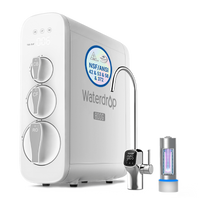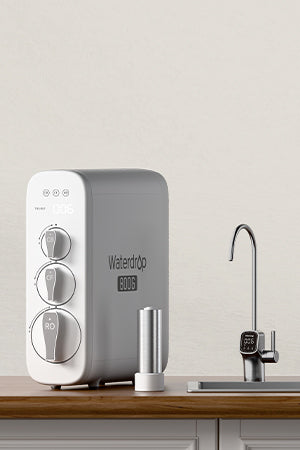In the United States, the U.S.
Environmental Protection Agency (EPA) regulates drinking water among public water systems through the Safe Drinking Water Act. The act sets a maximum concentration level for water chemicals and pollutants that we come into contact with. Contaminants are physical, chemical, biological, or radiological substances or matter in water. Anything other than water molecules may be considered a contaminant.
Contaminants can be naturally occurring, caused by human activity, or both. Drinking water requires treatment that
removes dangerous contaminants. If consumed, some drinking water contaminants can lead to health effects, such as gastrointestinal illness, reproductive problems, and neurological disorders. According to the World Health Organization (WHO),
contaminated drinking water causes roughly 485,000 diarrhoeal deaths each year.
Types of Water Contamination
There are three categories of drinking water contaminants, including physical, chemical, and biological.
Physical contaminants impact the physical appearance or properties of water. Examples of physical contaminants can include sediment or organic material released into lakes, rivers, and streams from soil erosion.
Chemical contaminants can be naturally occurring or man-made compounds, including nitrogen, bleach, salt, pesticides, metals, bacteria-produced toxins, and human or animal drugs. Biological contaminants in water, referred to as microbes or microbiological contaminants, may include bacteria, viruses, protozoan, and parasites.
Radiological contaminants such as cesium, plutonium, and uranium are chemical elements with an unbalanced number of protons and neutrons. The unbalanced chemical elements can result in unstable atoms to emit harmful radiation. Each category of
water supply contamination can come from various sources, including:
Agricultural
Operations related to agriculture use about 70 percent of the earth’s water supplies. Farming, livestock, animal waste, and the use of fertilizers and pesticides are responsible for agricultural water pollution when too much nitrogen and phosphorus are exposed to water and air. This can cause algae blooms that are harmful to humans and animals when exposed.
Ground
About 40 percent of Americans depend on groundwater to drink from. Groundwater is accessed through aquifers, which are natural water well systems made of sediment and rock that store precipitation underground. Groundwater can be accessed through a spring or well. Well water, however, can become dangerous when soil contaminants such as asbestos seep into the groundwater.
Ocean
Most ocean pollution spawns on land and is transported through streams and rivers. Plastics, air toxins, oils, chemicals, and other carbon emissions continue to contaminate our oceans. It is estimated that the ocean takes in nearly a quarter of all industrial carbon emissions.
Sewage and waste
Even though we think all wastewater gets treated, about 80 percent of global
wastewater gets reintroduced back into the environment without treatment. Contaminants can seep into it through sinks, showers, toilets, and irrigation.
Common Drinking Water Contaminants
Contaminated drinking water most likely contains microorganisms, nitrate, or arsenic. These contaminants can quickly cause widespread and serious illnesses from bacteria, viruses, and protozoa. Other contaminants include asbestos, copper, fluoride, radon, oil, or fertilizers.
Places with plenty of moisture, such as public water systems, stimulate bacterial growth. Harmful bacteria that can outbreak and contaminate drinking water include giardia, legionella, norovirus, shigella, campylobacter, salmonella, hepatitis A, cryptosporidium, and
E. coli. These bacterial can cause infections that affect humans, animals, and marine life. Underdeveloped regions have higher concentrations of contaminates making them more at risk for developing illnesses.
While national organizations regulate drinking water to protect residents from exposure, there are still risks for coming into contact. These regulations set standards for the amount of non-harmful contaminants that can remain in our water.
People at risk for drinking contaminated drinking water may have access to clean drinking water by
using reverse osmosis (RO) treatment systems. RO water treatment systems remove contaminants from water by forcing water molecules through a semipermeable membrane using significant pressure. Essentially, contaminants are flushed away via a filter, leaving clean drinking water.
Waterdrop D4 reverse osmosis water filtration system adopts innovative technology and design to integrate different filtration materials into a 5-in-1 composite filter. With dual layers of highly precise PP cotton, activated carbon fiber, activated carbon block and reverse osmosis membrane, the filter uses the least space to achieve an optimized filtration effect, reducing TDS, chlorine, heavy metals, and more.






































































